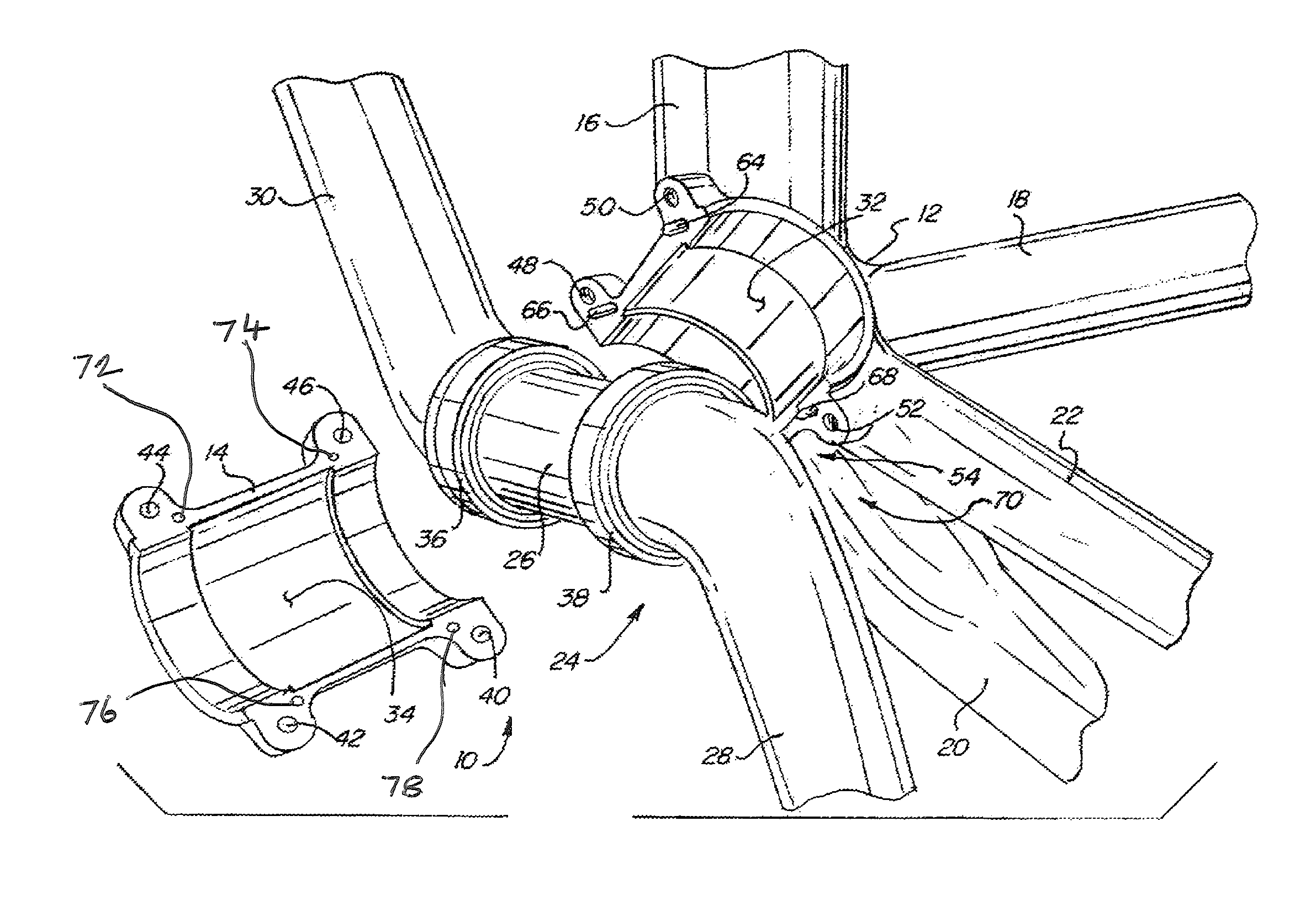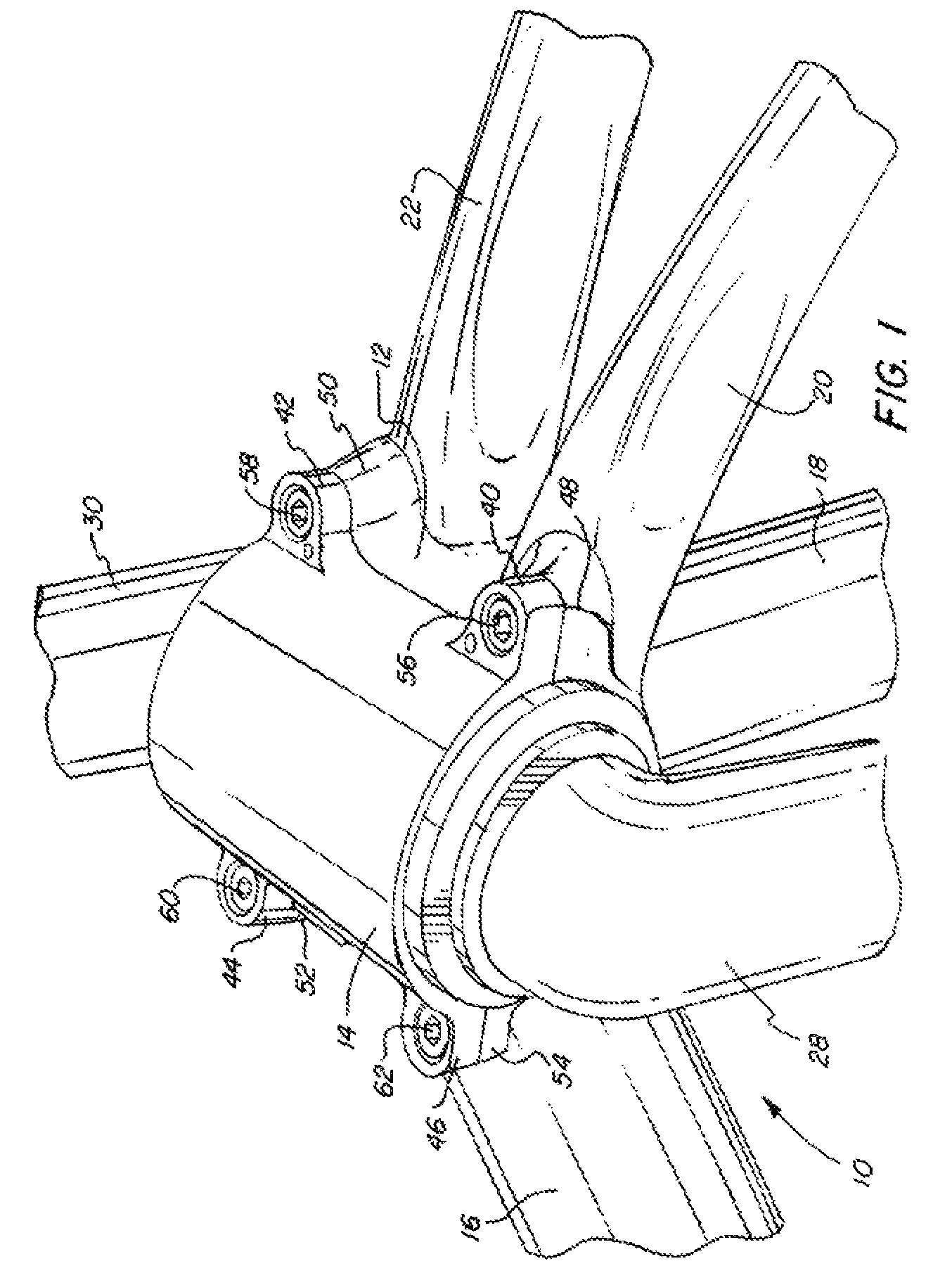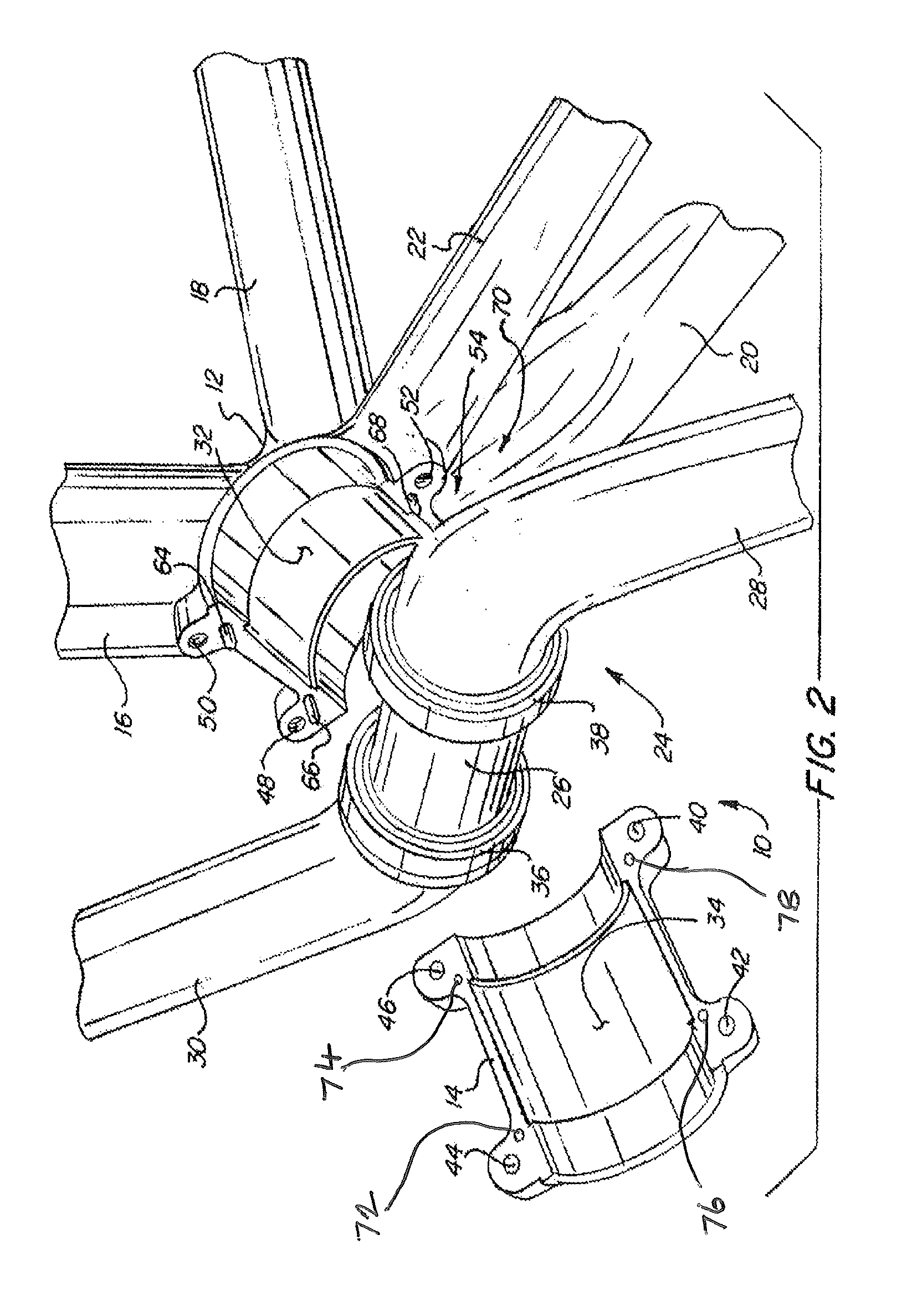Split bottom bracket
a bottom bracket and split technology, applied in the direction of friction roller based transmission, steering device, cycle equipment, etc., can solve the problems of increasing the weight of the assembly, the unitary structure cannot be easily inserted through the relatively close fitting standard-size bottom bracket, and the ineffective use of standard-size single-piece crank shaft assemblies
- Summary
- Abstract
- Description
- Claims
- Application Information
AI Technical Summary
Benefits of technology
Problems solved by technology
Method used
Image
Examples
Embodiment Construction
[0026]Referring now to the drawings, wherein like reference numerals designate corresponding structure throughout the views.
[0027]FIG. 1 is an illustration of the split bottom bracket assembly 10 according to one advantageous embodiment of the present invention. Split bottom bracket assembly 10 is shown assembled and comprises an upper portion 12 and lower portion 14. Upper portion 12 is formed integrally with the bicycle frame including tubes 16, 18, 20, 22. Upper portion 12 and lower portion 14 are coupled together and capture crank shaft assembly 24 (FIG. 2) therebetween. Crank shaft assembly 24 typically includes a crank shaft 26 along with pedal arms 28, 30 extending from crank shaft 26.
[0028]As seen in FIGS. 2 and 3, split bottom bracket assembly 10 is shown disassembled with crank shaft assembly 24 shown removed from split bottom bracket assembly 10. From this view it can be seen that upper portion 12 is provided having a semi-circular interior surface 32, while lower portion...
PUM
 Login to View More
Login to View More Abstract
Description
Claims
Application Information
 Login to View More
Login to View More - R&D
- Intellectual Property
- Life Sciences
- Materials
- Tech Scout
- Unparalleled Data Quality
- Higher Quality Content
- 60% Fewer Hallucinations
Browse by: Latest US Patents, China's latest patents, Technical Efficacy Thesaurus, Application Domain, Technology Topic, Popular Technical Reports.
© 2025 PatSnap. All rights reserved.Legal|Privacy policy|Modern Slavery Act Transparency Statement|Sitemap|About US| Contact US: help@patsnap.com



